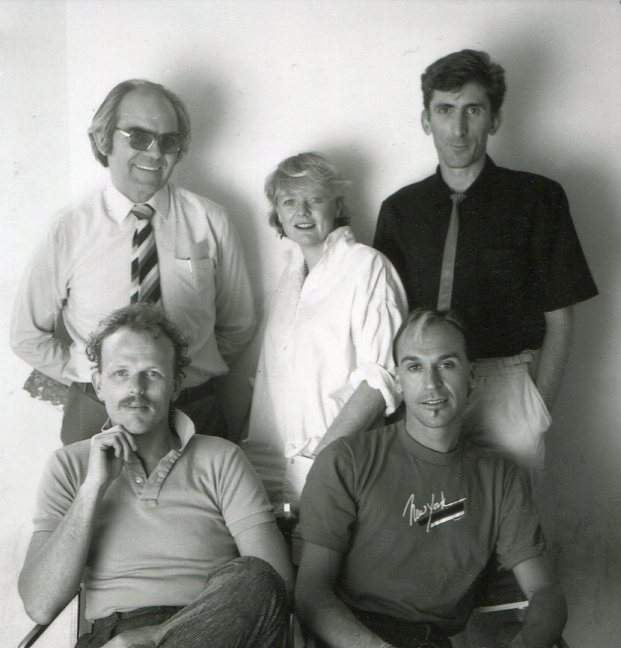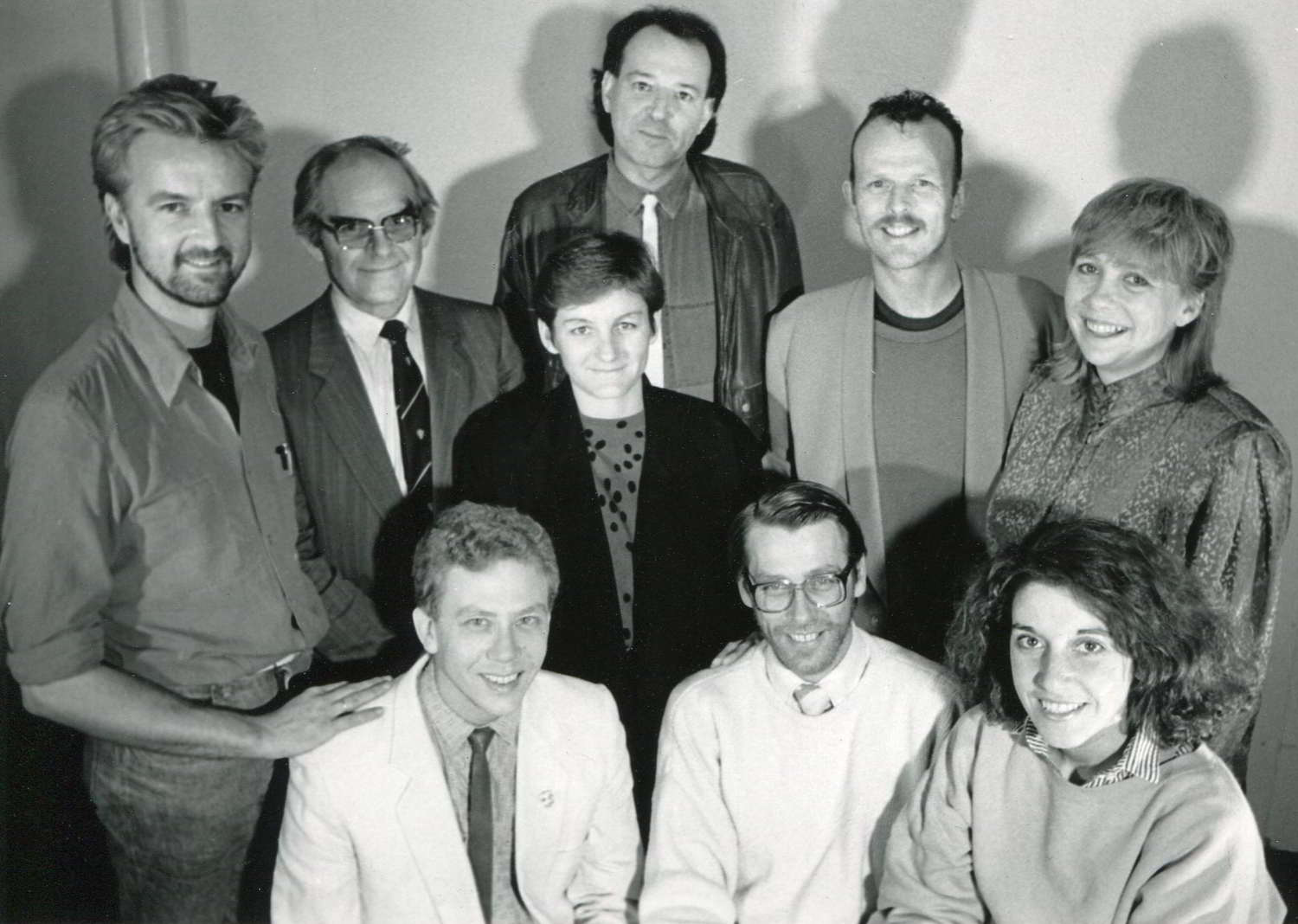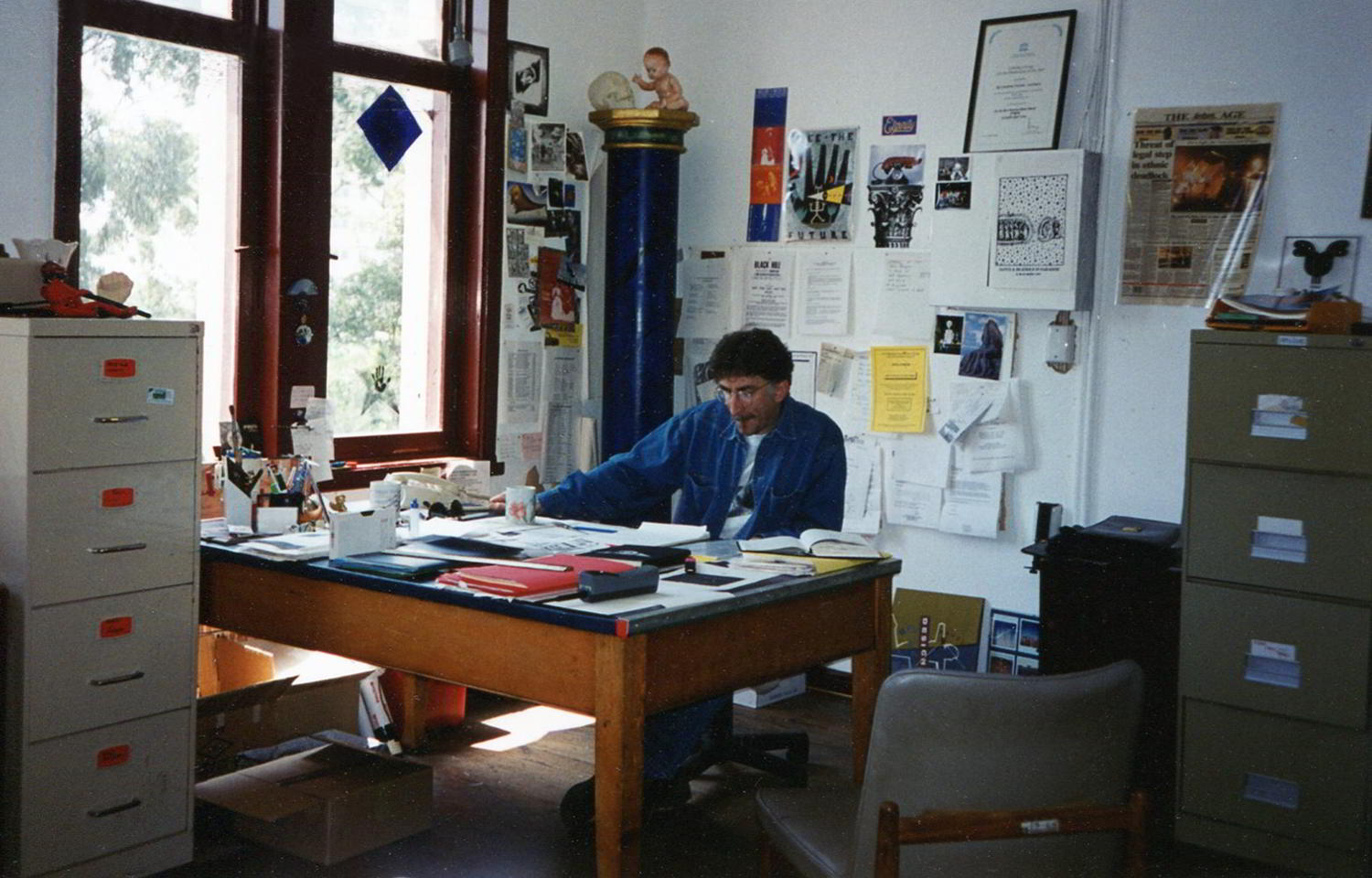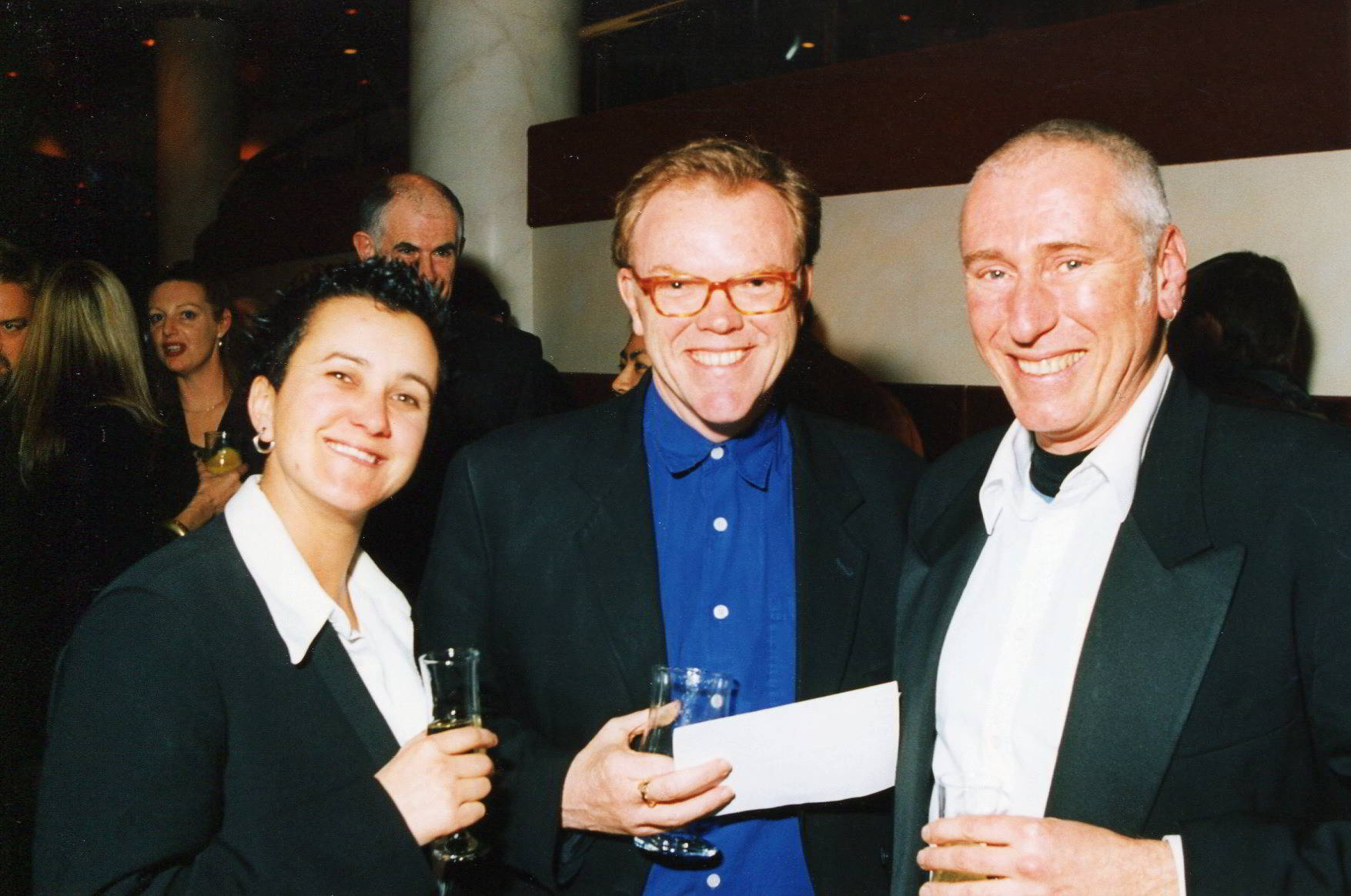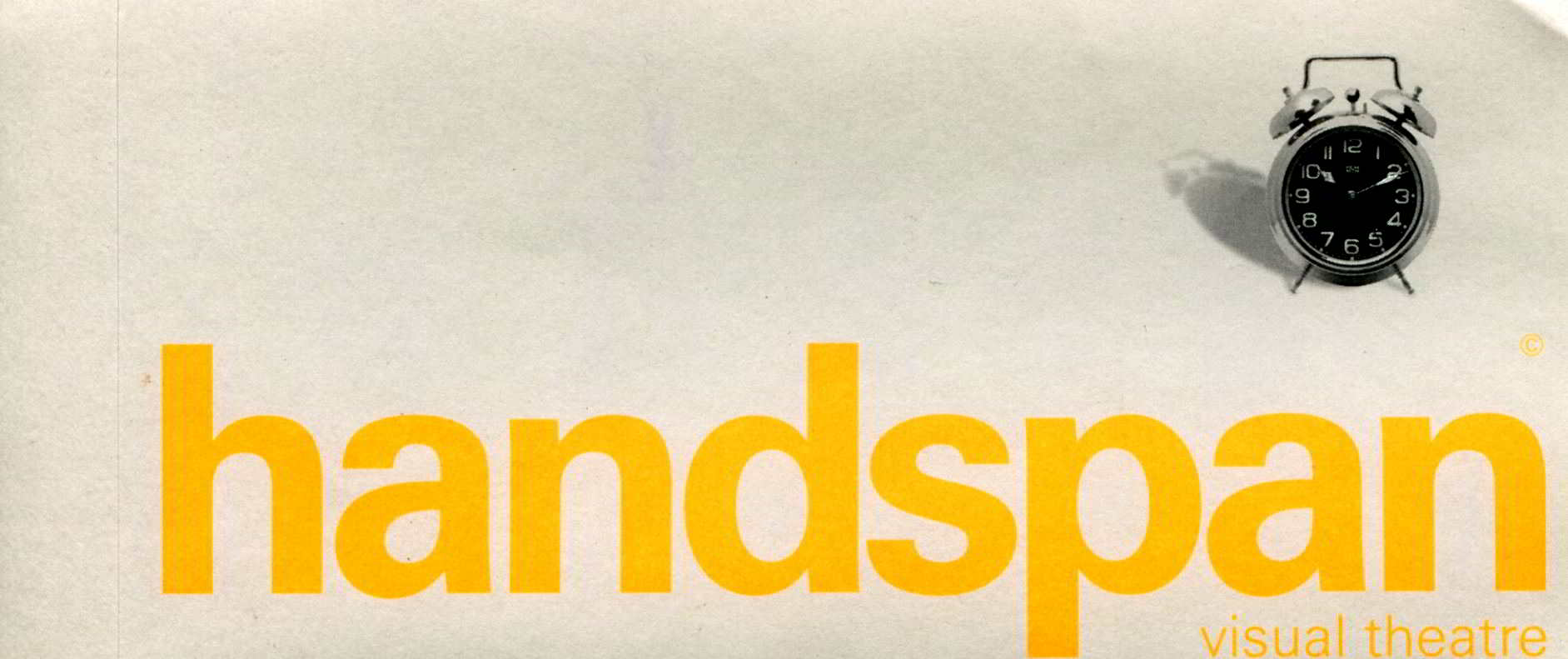This section outlines the people and their roles in the leadership of Handspan Theatre.
Handspan's structure shifted from a collective partnership to a not-for profit organisation limited by guarantee in 1982.
Members were apointed to a governing Board of Management and people were appointed in ongoing producing and administrative positions once core Government subsidy was secured.
The Board
Handspan Board Members were elected by the company membership and from its ranks.
The company incorparated as a not-for-profit entity in 1982 as Handspan Theatre Limited and its first formal Board comprised its founders Ken Evans (Chair), Helen Rickards, Peter J.Wilson and Andrew Hansen, who were actively working with the company, plus Handspan’s accountant and financial advisor for 10 years, Alastair Stevenson and for a brief time in 1983/84, Laurie Staub.
Handspan established the Board as its governing body only to facilitate the legal requirements of its growing business. Decisions till 1985 were still agreed by the collective membership and Board meetings and minutes were open to everyone who had joined up.
As the organisation grew however and its membership dispersed beyond those actively engaged in company work, the Board became a more powerful force in guiding Handspan's direction and priorities.
In 1985/6 recently joined members from the Melbourne arts industry led the Board. Jon Stephens, from the Australian Children's Television Foundation, was elected Chair with Andrew Bleby, Director of Melbourne's Next Wave Festival, as his Deputy. Handspan artistic members, Paul Judd replaced Jon Stephens in the Chair in 1989, and Gilly Farrelly held the position in 1993. The Board continued to be dominated by active company artists until the mid-1990s but from then on included outside experts co-opted to its ranks for particular responsibilities. Some of these Board members served for several years such as Peter Anthonsen (Treasurer:1987 -1997); Joy Geary (Chair: 1991 - 1992), and Meredith King (Publicist 1993 - 1998).
Until 1991 Handspan Board Chairs continued to be active members closely associated with its day-to-day activities.
By the mid decade, however Janice van Reyk (Chair: 1994 - 2001) and Jennifer Colbert (Chair: 2002), although supportive of Handspan's work, had no affiliation with its artistic practice and raison d’être. The changed nature of the Board and loss of Handspan's 'corporate memory', was symptomatic of the changed nature of the company that led to its winding up in 2002.
The Artistic Directors
Handspan’s Artistic Directors from 1977-1989 were its working founders and members, represented from 1983 by an Executive Director: Helen Rickards (1983-1986) and Trina Parker (1986-1989).
Trina assumed the title of Artistic Director from 1988 to clarify external perceptions of company leadership. A co-Artistic Directorship between Trina and Peter J.Wilson was implemented in 1990 in a bridging process towards membership acceptance of the role and its power to shape company directions. Briefly in 1991/92, Handspan experimented with an outside-the-company appointee, David Baird. His tenure was short, and in 1993, Ken Evans was appointed to the position.
During Ken's incumbency the autonomy of the role, a much discussed concept, was redefined and artistic leadership passed from company members to the personal vision of an individual Artistic Director appointee. The membership, by then diversified from its original ensemble core, ratified this change to the Company Manifesto and opened the door for David Bell who held the position from 1998 to 2001 to re-brand Handspan as Handspan Visual Theatre. Cazerine Barry was appointed in 2001 to succeed David but her tenure was curtailed by the company's loss of Government support and its winding up in 2002.
The Managers
In its early days, Handspan's administration, production management and marketing were carried out in a voluntary capacity by artists working with the company at the time. It was part of the 'collective' ethos - and an economic imperative. As Handspan grew touring nationally and internationally and became supported by and accountable for Government subsidy, these roles demanded increasing professional expertise, independent job specifications and remuneration.
Until 1986 administrative positions at Handspan were fragmented and generally short-term. Helen Rickards was ratified as Executive Director in 1983 with part-time administrative people Diana Kidd (1983) and Geoffrey Harrison (1984).
Jude Bourguignon joined the company in 1984 initially as a part-time administrator and created the role of Company Publicist. In this position until 1987, Jude was instrumental in Handspan's transition from a schools and community-based touring troupe to a recognised theatre company on the national and international mainstage. With the appointment of Trina Parker to run the organisation in 1986, full-time Administrator (and later General Manager) Stephen Armstrong became part of the team.
Professional management was a significant boon to the growing organisation and accounted for much of its success in securing sustainable funding to pay its people appropriately; in formalising engagements for company work; and in accessing its expanding marketplace.
General Managers, Vivia Hickman (1989 - 1993), who replaced Stephen, was instrumental in fully professionalising Handspan's administrative operations, followed by Rachel Healy (1994 - 1996) and Fleur Parry (Executive Producer: 1997 - 2001). All were cornerstones of Handspan's operation during their time and have continued in high-level arts management careers since. Dion Teasdale, who stepped from Administrative Co-ordinator into the Interim GM position for some months in 1996, oversaw Handspan's era-ending move from its Fitzroy studio in 1995 and relocation to Jesse St in Richmond.
Contrarily, over time, Handspan's professionalised management contributed to the erosion of the company's venturesome flair. During its first 20 years Handspan works had been developed and re-developed to maximise its touring potential and maintain a professionally experienced ensemble of interdependent artistic expertise. By the 1990s the company had on-going infrastructure funding but its activities relied on grant-specific projects which rarely managed to find the entrepreneurial leverage to sustain the company's full-time activity. Creative, performance and production teams were engaged for short-term project contracts only, although a full time management team were employed.
Closure 2002
In 2001, after three years of minimal output and increasingly lukewarm public reception, Handspan lost its General Grant subsides from both the Victorian State and Federal Governments. In the meantime, the Board had already appointed a new Artistic Director, Cazerine Barry for the following year and was reluctant to wind up the organisation.
However in 2002, at a final General Meeting, the membership voted to "take the band off the stage". Members preferred that Handspan Theatre to be remembered for its vibrancy and its unique and internationally-known productions than to fade into the likely mediocrity and sporadic output of an under-resourced group with a membership increasingly indifferent to the objectives of the Handspan Theatre Manifesto.
Nevertheless, Handspan members were energetic in trying to pass on the legacy of their company's time; and Handspan's remaining funds and equipment were dispersed to the wider puppetry community to seed emerging puppeteers and visual theatre exponants.
Swinburne University Library received Handspan's puppetry library and a donation towards the creation of its David Williamson Theatre Studio (initially named the Handspan Studio). The Australian branch of UNIMA, the International Puppetry Association, received funds for a five-year program of annual scholarships to enable emerging puppeteers to take up professional development opportunities overseas. The company's remaining documents, photographs and memorabilia were given to the Performing Arts Collection at Arts Centre Melbourne.
PEOPLE:
